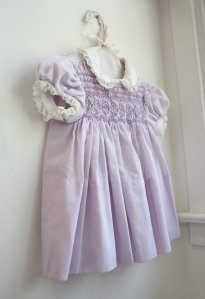This is the 2nd part of a 4 part series about the lessons my husband (NT) and I (aspie) have learned during the 25 years we’ve been married.
——
 Accept that aspies have good days and bad days.
Accept that aspies have good days and bad days.
I try hard to keep some of my more annoying aspie traits under control, but there are times when symptoms that I thought I had a handle on suddenly resurface or worsen. This tends to happen when I’m stressed or anxious.
A few weeks ago, an unplanned four-hour wait at the DMV triggered a bout of perseverative thinking. Even though I was aware of it, it was difficult to stop going over and over the situation in my head and, worse, out loud. It wasn’t like I wanted to keep recalculating our potential wait time based on the rate of customers being served times the number of people ahead of us factoring in the bizarre DMV numbering system that involved six different letter prefixes plus the periodic return to the queue of skipped numbers. It wasn’t that I was enjoying obsessing over each clerk who disappeared on break, thereby lengthening our wait time, or repeatedly pointing out how arbitrary the list of required identity documents was. I just couldn’t stop myself from doing it, even though I was aware of what was happening and aware of how my perseveration was making a stressful situation worse for both of us.
Anxiety or sensory overload can aggravate a wide variety of Asperger’s symptoms. When I’m stressed I find that I’m more clumsy, less open to being touched, more rigid in my thinking, less willing to deviate from routine, more vulnerable to perseverate thinking, more prone to tunnel vision, and more likely to struggle with auditory processing. Symptoms that don’t normally interfere with my functioning can become a big obstacle. I know it’s frustrating for my husband to find himself in a stressful situation and then have to deal with an outbreak of my aspie traits on top of everything else. These are the moments that really test our marriage and I’m still working on finding ways to make them less awful for both of us.

 Try to balance the aspie partner’s touch sensitivities with the NT partner’s need for physical affection
Try to balance the aspie partner’s touch sensitivities with the NT partner’s need for physical affection
Touching, one of the most important and fundamental aspects of an intimate relationship, can be uncomfortable for people with Asperger’s. Although I’ve made a lot of progress in this area, there are still times when I shrink away from being touched.
Certain types of touching in particular–light touches and those that come at unexpected times–are more likely to be uncomfortable. When I’m intensely engaged in an activity, being touched often registers as an unwanted distraction rather than spontaneous affection. I’m also more likely to pull away from touch when I’m stressed or anxious.
Then there are the times when my brain is so busy trying to figure out where a certain type of touch is headed that it’s hard to simply relax and enjoy the moment. Because aspies don’t get many of the nonverbal cues involved in intimate relationships, we rely heavily on the intellectual side of our brains to process how an intimate moment is going to proceed. Yeah, that’s about as romantic as it sounds.
All of this can be very hard on an NT partner who naturally craves physical affection. Although it’s hard to change how I feel about being touched at the “wrong” time, I try to compensate by initiating physical contact that I’m comfortable with at a time that’s good for me.
Author Liane Holliday Willey once took a lot of heat for including holding her husband’s hand five times a day on her “to-do” list. Putting handholding on a to-do list may sound cold and mechanical but that doesn’t mean that the action itself has to be mechanical. Since I’ve begun consciously looking for opportunities to initiate small touches during the day, I find that being physically affectionate has become more of a natural instinct for me and that feels good.
 Accept that the NT partner may need to compensate for the aspie partner’s social skills deficits at times.
Accept that the NT partner may need to compensate for the aspie partner’s social skills deficits at times.
No matter how hard I work at improving my social skills, I still regularly miss nonverbal cues, resulting in everything from confused looks and awkward pauses to downright hostility from other people.
Here’s a recent example from when The Scientist and I met with a saleswoman about a new apartment:
Saleswoman to The Scientist (who she’d met previously): “It’s good to see you again.”
The Scientist : “It’s good to see you, too.”
Saleswoman to me: “I’m Linda. It’s nice to meet you. Have a seat.”
Me (shaking her offered hand then sitting down): “Thanks, it’s nice to meet you too.”
{awkward pause}
The Scientist : “Oh, Linda, I don’t think you met my wife.”
I had no idea what was causing the awkward pause until The Scientist jumped in and offered my name to the saleswoman. What threw me was this: The Scientist had already met Linda and didn’t introduce himself. I must have been subconsciously modeling his behavior so I didn’t introduce myself either.
This sounds like a minor hiccup in the conversation but it happens frequently and it unsettles people. As an aspie–and an adult–it can be hard to accept that you need this type of help from your partner. Again, get over it. We all have skills that come naturally and social skills aren’t on the list of natural talents for aspies.
This is an area where practice can help. If the NT partner is willing, you can try roleplaying or talking through how unfamiliar events might play out. However, both partners need to understand that while aspies can work at improving social skills, it’s unlikely that they’ll achieve the sort of social proficiency that comes naturally to NTs.
Having to frequently repair social errors is hard on the NT partner and will probably continue to be an issue throughout your partnership. Acceptance can go a long way in situations where change is slow and inconsistent.
—–
In part 3: Compromise, communication aspie-style and understanding triggers












